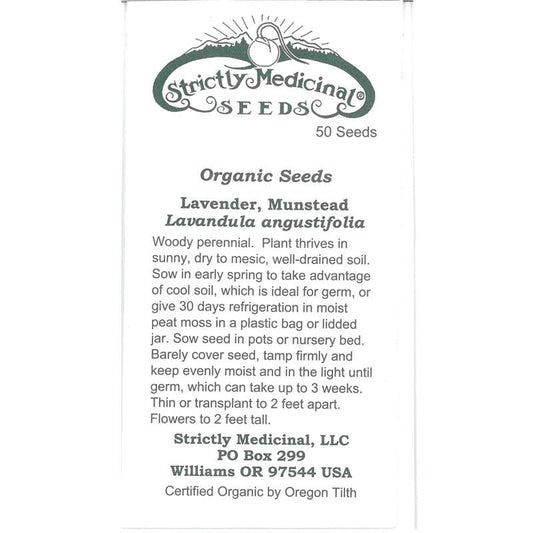It's easy to get carried away by
the virtues of lavender. Here are the
somber reasons to plant it: Drought tolerant, deer-resistant, easy care (cut back once a year). There are lots of
fun reasons too: Fragrant flowers come in colors from white to deep purple, graceful stems that brush your ankles as you walk by.

Don't forget the
useful reasons: As Linnie shows in our
video you can make lavender wands and wreaths. It's essential as part of Herbes de Provence, and also a novel addition to goat cheese, ice cream, or as a swizzle stick in your iced tea or cocktail.
Culture
All lavenders require full sun, good drainage and alkaline soil. If your soil tends toward acid clay then one-quarter of the total planting soil should be compost, along with a small amount of gravel to assist drainage. If bought as a plant, the lavender should be sited on a mound or slope so that excess water runs off. Water weekly in the first summer, and then every three weeks in following summers. A busy gardener is rewarded by the fact that lavender does not have a yen for fertilizer and rich soil. Mulch it with gravel, to recall its Mediterranean home.
Lavender Varieties
English Lavender If you have only one lavender in your garden, make it English lavender,
Lavandula angustifolia. Its fragrant flowers dry well, and their flavor is delicate enough to use in food. The hardiest of all lavenders (USDA zones 5-11), it is perfect in Northern California and in most other parts of the United States. Confusingly, the ancient plant has many valid names, such as: True lavender,
Lavandula officinalis or Lavandula vera. Some of the most beautiful and popular lavender varieties in the world are cultivars of this plant. Flowers come in a range of colors from deep purple through blue, mauve-pink and white. Look for:
-
Hidcote- purple
- English Pink
- English Perfume - plum
The natural form is rounded, so prune lightly after June blooming to keep the dome shape. If it is pruned heavily the blooms in the next season will be dramatically reduced.
Spanish Lavender
Lavandula stoechas,
Spanish lavender, has fat pineapple-shaped flowers topped by a few alert-looking bracts. Hardy in Zones 8-10, just prune it back after the first bloom, to give it shape and encourage a second bloom in the summer. Spanish lavender has a strong, almost resiny flavor, so use it in food only when you want a real punch. The flowers are lovely in bloom but don’t dry all that well.
French Lavender
Lavandula dentata, French lavender, has distinctive little "teeth" along the edges of its leaves. Hardy to USDA zone 8b, it's a vigorous addition to your garden. This is not the lavender grown in France for essential oils -- that is
Lavandula x intermedia, a cross between English lavender and spike lavender. Enjoy this one for its beauty and fragrance in the garden and bouquets. Like its Spanish cousin, the flavor is strong and this should be used only when you want an assertive taste.
Fernleaf Lavender
Lavandula multifida,
fernleaf lavender brings unusual fern-like foliage to your lavender collection. The distinctive foliage and trident-shaped flower heads are attention getters. Indigenous to Spain and Portugal, fernleaf lavender is hardy only in Zones 9-11. Grow this as an intriguing ornamental (there is no floral fragrance and the foliage is too strong to be used in cooking). It grows easily from seed, making it simple to bring back every year. Choose lavenders that will suit your climate, and any cooking or crafting you'd like to do. Then relax and enjoy that fragrance!
 Don't forget the useful reasons: As Linnie shows in our video you can make lavender wands and wreaths. It's essential as part of Herbes de Provence, and also a novel addition to goat cheese, ice cream, or as a swizzle stick in your iced tea or cocktail.
Don't forget the useful reasons: As Linnie shows in our video you can make lavender wands and wreaths. It's essential as part of Herbes de Provence, and also a novel addition to goat cheese, ice cream, or as a swizzle stick in your iced tea or cocktail.









